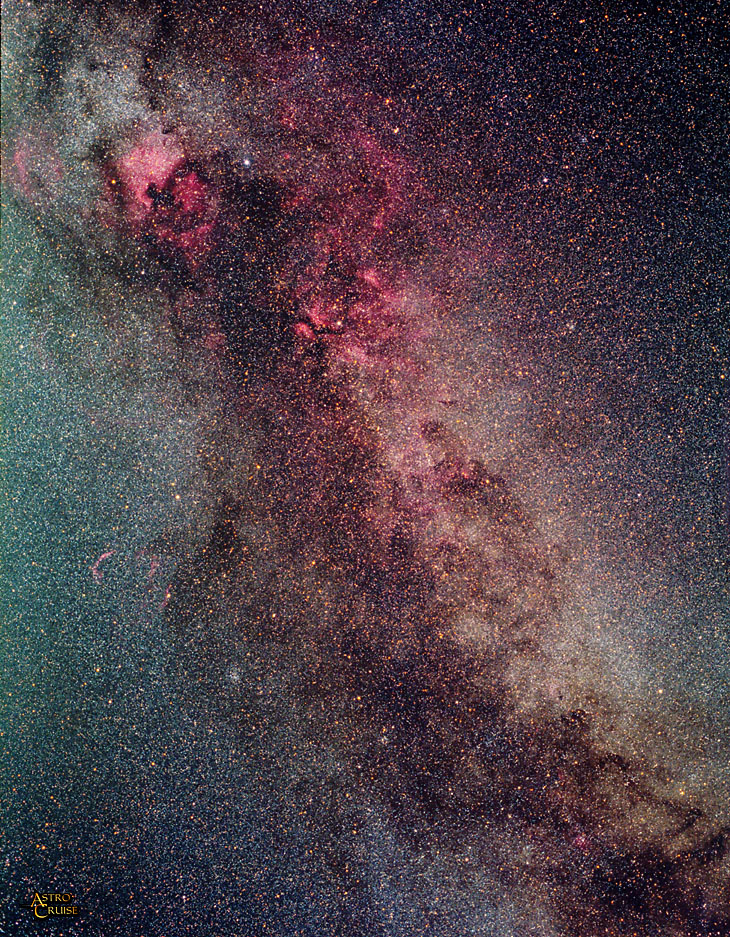
 |
Object Data: This wide-field image is centered on the Cygnus region of the northern Milky Way galaxy and extends from northern Cygnus down to Vulpecula in the south. To the north are several prominent gas emission regions, characterised by the pinkish glow from a mixture of ionized Hydrogen and Oxygen gases. The most prominent region in the north is NGC 7000 (North America Nebula) and to the south-west of this is the extended emission region called IC 1318, the most prominent part of which is the Butterfly Nebula (look for the Butterfly wings). Many other noteworthy objects are captured in the field of this image, some of them too small to be seen easily. However the Veil Nebula stands out clearly directly to the south of the North America Nebula. Some others are visible if you know where to look - for example the Crescent Nebula (NGC 6888) and down in the south the Dumbbell Nebula (M27), though at this scale the Dumbbell looks just like another star. It is quite fun to compare this image against a star mapping program such as Megastar or The Sky.
Date: 21/06/01
Location: Southern France
Conditions: warm, light wind, transparency=8, seeing=3
Optics: Pentax 105mm f/2 lens (working at f/4) on Pentax 6x7 body
Mount: AP 900 GTO on Portable Pier
Autoguiding: SBIG ST-4 tracking RCOS 12.5"
Camera: Pentax 6x7 piggybacked on RCOS 12.5"
Film: Hypersensitsed Kodak GPY 400 120 format
Filtration: None
Exposure: 2x25 minutesEnhancement: Two negatives were scanned at 2571 dpi using a Sprintscan 45 Ultra, then digitally registered in Registar, then further enhanced in Photoshop.
Notes: I had set up the RCOS 12.5" in anticipation of taking some narrow field images of Milky Way regions. However seeing was very poor and while waiting for it to stabilise (it never did) I piggybacked the medium format camera on the RCOS to take some wide field images (which would be relatively unaffected by the seeing). Hence the bizarre use of the RCOS 12.5" as the guidescope!
The sheer number of stars in an image such as this can hinder visibility of the overall structure of this arm of the Milky Way. This also makes the image appear rather grainy, whereas in fact the background sky is quite smooth in the original high resolution image.
This image makes a very fine 13"x18" print - far more detail can be seen than in the above image yet at the same time the structure can be seen more clearly such as in this downscaled image:
|
|
|
|